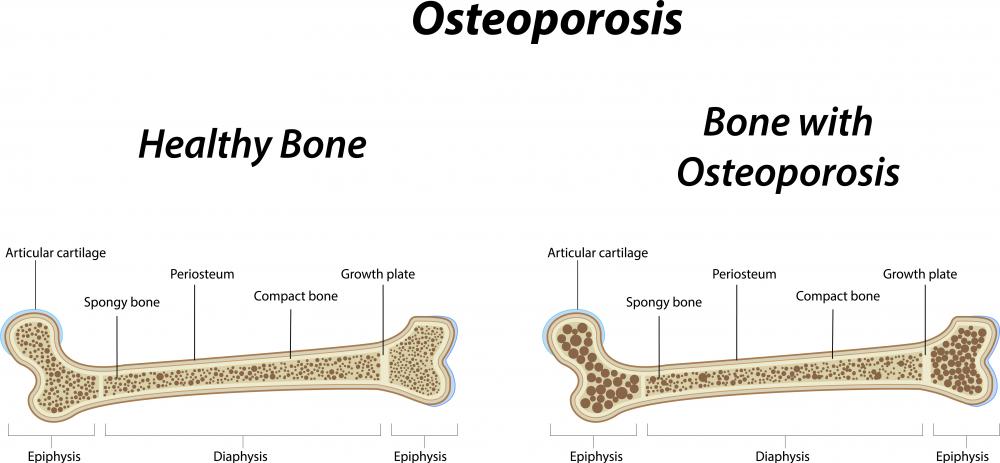At WiseGEEK, we're committed to delivering accurate, trustworthy information. Our expert-authored content is rigorously fact-checked and sourced from credible authorities. Discover how we uphold the highest standards in providing you with reliable knowledge.
What is Bisphosphonate Therapy?
Bisphosphonate therapy is the use of the chemical class bisphosphonates to treat osteoporosis and other conditions involving bone loss. They are used primarily in women who have gone through menopause and have suffered a loss of bone mass. Some of these drugs are also used to treat other diseases that act by decreasing bone mass, such as Paget’s disease and multiple myeloma. These drugs cause the death of the cells that cause the dissolution of bone compounds during the process of bone breakdown and rebuilding.
Bone tissue is constantly in a state of flux, and the components are always being degraded and rebuilt. These processes usually work equally well, resulting in strong bones. In postmenopausal women, however, the process can shift in the direction of bone breakdown, resulting in brittle bones that fracture easily. This loss of bone mass is known as osteoporosis, and it is commonly treated with bisphosphonate therapy.

A number of compounds are considered bisphosphonates. They all have two phosphonate, PO3, units linked to a carbon backbone. This structural feature classifies it as a diphosphonate. The central carbon has two side chains on it that vary in structure. These side chains are what determine the specificity and chemical properties of the different drugs.

A major difference between the compounds used in bisphosphonate therapy is whether or not they have nitrogen groups on the long side chain. The commonly prescribed drugs ibandronate and alendronate have nitrogen in them. These drugs are widely prescribed to women who have undergone bone density scans and have been diagnosed osteoporosis or another condition that causes loss of bone mass.
Bones are the major source of calcium in the body. These compounds all bind tightly to calcium. Thus, they bind almost entirely to bones. Roughly 50% of the bisphosphonates ingested are excreted in the urine.

Bisphosphonate therapy with alendronate and ibandronate has been shown to increase bone mass and help improve the health of patients with osteoporosis when taken for five years. It is not clear if taking them for longer will have benefits for patients. Pills should be taken with a specific amount of water to avoid irritation to the esophagus, and the patient should also remain upright for 60 minutes after taking a dose.
These compounds can remain in the body for years. They can cause abnormalities in a developing fetus, so it is strongly recommended that pregnant women not take these drugs. Young women are also advised to avoid these drugs. The Food and Drug Administration (FDA) in the United States issued a statement in 2010 that the occurrence of a rare type of fracture in the femur, or thigh bone, can be enhanced in women who have undergone bisphosphonate therapy for a long duration.
AS FEATURED ON:
AS FEATURED ON:













Discuss this Article
Post your comments